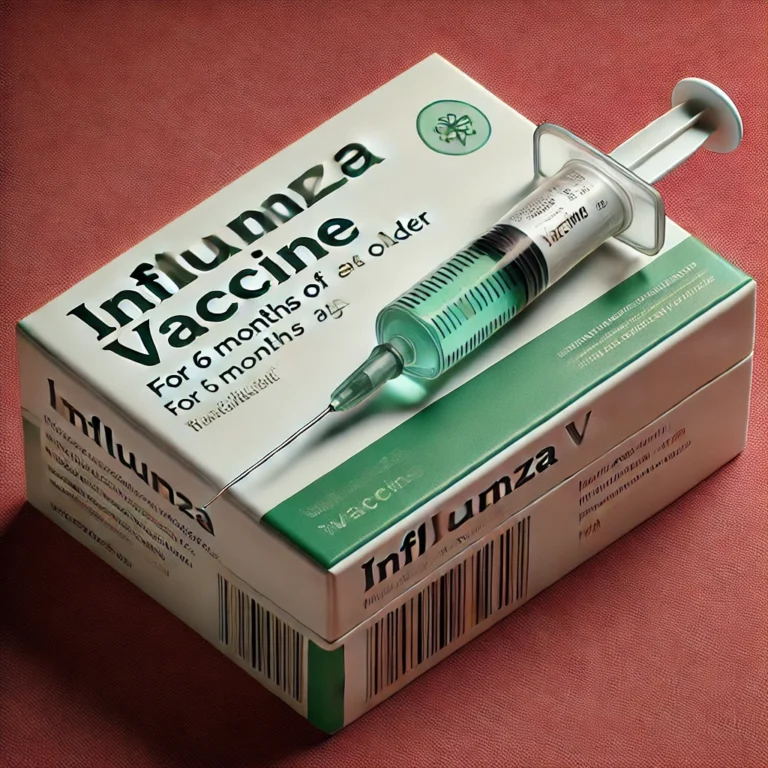In late January 2025, the U.S. State Department made a highly significant decision regarding the distribution of HIV medications to vulnerable populations around the world. After much deliberation and following a wave of global backlash, the U.S. government reversed its earlier policy and permitted the resumption of life-saving HIV treatment programs that had been temporarily suspended. This shift in policy, which comes on the heels of concerns raised by health organizations, advocacy groups, and the international community, was seen as a critical move in sustaining global efforts to combat the HIV/AIDS epidemic.
This article delves into the details surrounding the U.S. State Department’s decision to allow HIV medication distribution to resume, examining the reasons behind the temporary suspension, the immediate and potential long-term implications for global health, and what this means for the future of U.S. foreign aid. As the global health community continues to respond to this policy reversal, there are concerns about the broader context in which these decisions are being made, and the uncertainties regarding future U.S. foreign aid programs.
Background on the Policy Change
The U.S. State Department’s decision to freeze the distribution of HIV medications was part of a larger initiative aimed at reassessing and restructuring U.S. foreign aid programs. In late 2024, the government announced the suspension of various foreign assistance initiatives, citing concerns over the effectiveness and accountability of these programs. The freeze applied to a broad range of health and humanitarian efforts, including HIV treatment initiatives such as the U.S. President’s Emergency Plan for AIDS Relief (PEPFAR).
The suspension was based on an internal review of U.S. aid programs, which were seen as lacking in measurable impact and not always delivering results in the most cost-effective manner. The U.S. government emphasized that it needed to ensure taxpayer dollars were being spent efficiently and effectively to maximize the return on investment. While this move was applauded by some fiscal conservatives, it was met with immediate and widespread opposition from global health organizations, advocacy groups, and international governments.
Among the most impacted were programs dedicated to providing antiretroviral drugs (ARVs) to people living with HIV/AIDS. These programs, largely funded by the U.S. government, have been instrumental in reducing the spread of HIV, preventing mother-to-child transmission, and saving countless lives in regions such as sub-Saharan Africa. The decision to suspend these programs, especially at a time when the global fight against HIV/AIDS is far from over, sparked a renewed conversation about the role of U.S. foreign aid in supporting global health systems.
The Impact of the Suspension on HIV Treatment
The suspension of HIV medication distribution posed significant risks to individuals and communities that depend on U.S. foreign aid for access to essential health services. HIV treatment, particularly antiretroviral therapy, has been proven to be one of the most effective means of controlling the virus and preventing its progression to AIDS. In many low-income countries, especially those in sub-Saharan Africa, access to ARVs is largely facilitated through U.S.-funded programs such as PEPFAR.
In these regions, where health systems are often underfunded and overstretched, U.S. aid programs have played a pivotal role in maintaining the supply of HIV medications and supporting healthcare infrastructure. Many people living with HIV depend on these programs for consistent access to life-saving treatments, and interruptions to this supply would have dire consequences. Without access to ART, individuals risked the virus progressing to AIDS, which, without treatment, can lead to death.
Moreover, the freeze in HIV treatment programs had the potential to lead to a resurgence of HIV infections. Preventing new infections and reducing transmission rates are key goals in the fight against HIV/AIDS, but these goals are threatened when treatment programs are interrupted. Without access to medications, patients become more susceptible to developing drug resistance, making it even harder to control the virus.
While the U.S. government’s freeze on HIV medication distribution was temporary, it raised significant concerns about the broader stability of health programs funded by the U.S. in vulnerable countries. The uncertainty surrounding these programs added to the challenges faced by global health initiatives, especially as countries still grappling with the pandemic of COVID-19 and the ongoing fight against other infectious diseases like malaria and tuberculosis.
Resumption of HIV Medication Distribution: The U.S. Decision
In January 2025, following a period of intense international pressure, the U.S. State Department reversed its decision and allowed for the resumption of HIV medication distribution. This move was a response to the mounting concerns from the international community, including global health organizations, non-governmental organizations (NGOs), and international governments, which emphasized the dire consequences of halting HIV treatment programs.
The resumption of HIV medication distribution is a vital development, particularly for countries that rely on the U.S. as a primary donor for HIV/AIDS-related health programs. The U.S. government’s recognition of the necessity of continuing these life-saving treatments reflects an understanding of the importance of maintaining progress in the fight against HIV/AIDS. This decision ensures that millions of people who depend on ARVs will continue receiving the medications necessary to manage their condition and prevent further transmission of the virus.
The move also reaffirms the commitment of the U.S. to global health security. Despite the freeze on other forms of foreign aid, the resumption of HIV medication distribution serves as a clear indication that the U.S. recognizes the importance of certain health programs that are critical to maintaining global public health. However, while the decision to allow the resumption of HIV treatment programs is a positive step, it raises questions about the future of U.S. foreign aid, especially in areas not directly related to HIV/AIDS.
Global Reactions to the Resumption
The international reaction to the State Department’s decision was mixed. On one hand, global health advocates and organizations that had been lobbying for the resumption of HIV treatment programs expressed relief and praised the U.S. for recognizing the importance of continued aid in the fight against HIV/AIDS. UNAIDS, the World Health Organization (WHO), and the Global Fund to Fight AIDS, Tuberculosis, and Malaria all welcomed the decision, acknowledging that it would save millions of lives and prevent further HIV transmission.
On the other hand, many organizations stressed that the U.S. needs to maintain its long-term commitment to international health and humanitarian aid. While the decision to resume HIV medication distribution was seen as a victory, critics warned that it was not enough. The freeze on other essential health programs, such as maternal health, tuberculosis prevention, and malaria treatment, remains in place, and these gaps in aid could have devastating consequences for health outcomes in many countries.
Humanitarian groups, including Médecins Sans Frontières (Doctors Without Borders), have called for greater accountability in the allocation of U.S. foreign aid. They argue that the U.S. should not only ensure that health programs related to HIV/AIDS continue but also expand support for other critical areas of public health. The absence of funding for a comprehensive health response could leave millions of people vulnerable to preventable diseases, especially in the absence of strong domestic healthcare systems in many low- and middle-income countries.
Furthermore, international health experts have emphasized the need for sustained funding and transparent oversight to ensure that U.S. aid is being used effectively. Some suggest that partnerships between the U.S. government, international organizations, and local governments may be key to improving the delivery of foreign aid, ensuring that the most pressing health challenges are addressed in a holistic manner.
Challenges and Uncertainties Going Forward
Despite the resumption of HIV medication distribution, significant challenges remain. The freeze on U.S. foreign aid has disrupted a broad range of health programs, and the future of these initiatives remains uncertain. HIV treatment is only one part of the global fight against HIV/AIDS, and other efforts such as prevention, education, and healthcare infrastructure need to be supported as well.
The broader challenge, however, is the uncertainty surrounding the future of U.S. foreign aid programs. While HIV treatment programs have resumed, many other areas of health and humanitarian assistance remain on hold. For example, U.S. funding for maternal health programs, food security initiatives, and health education projects has yet to be reinstated. These programs are crucial for addressing the underlying causes of health disparities and improving the overall well-being of vulnerable populations around the world.
Moreover, there is concern that the emphasis on cost-effectiveness in U.S. foreign aid could undermine efforts to combat long-term health challenges. HIV/AIDS is a complex issue that requires sustained investments over time, and reducing funding for comprehensive health systems could ultimately hinder progress toward ending the epidemic. While short-term fixes, such as the resumption of HIV medication distribution, are important, a broader commitment to health infrastructure is essential.
Looking Ahead: The Future of U.S. Foreign Aid
The future of U.S. foreign aid will likely be shaped by ongoing debates about the role of government spending and the effectiveness of international assistance. The U.S. government has indicated that it will continue to evaluate its foreign aid programs based on measurable outcomes, but there is a growing concern that this could lead to a narrowing of focus and the exclusion of critical health initiatives.
While the resumption of HIV medication distribution offers hope, the global community must remain vigilant and push for the continuation of a broad range of health and humanitarian programs. The challenge now is to ensure that the U.S. government recognizes the interconnectedness of global health challenges and continues to invest in the long-term solutions necessary to address them.
Ultimately, international cooperation will be key to ensuring that vital health programs, including those related to HIV, continue to receive the funding and support they need. It is essential for global health organizations, governments, and civil society to work together to safeguard these programs and ensure that they are sustainable in the years to come.
The U.S. State Department’s decision to permit the resumption of HIV medication distribution represents a critical step forward in the ongoing fight against the HIV/AIDS epidemic. However, it also highlights the complexities and challenges of U.S. foreign aid policy. While the decision provides immediate relief to millions of people who depend on U.S. aid for HIV treatment, it underscores the uncertainty surrounding the future of global health programs.
As the international community continues to navigate these challenges, it is crucial that we remain committed to supporting comprehensive health programs that address the root causes of health disparities. The resumption of HIV medication distribution is an important victory, but it must be seen as part of a broader effort to strengthen health systems and ensure that all people, regardless of where they live, have access to the care they need to lead healthy lives.
Feel free to check out our other website at : https://scoremaxed.com/













